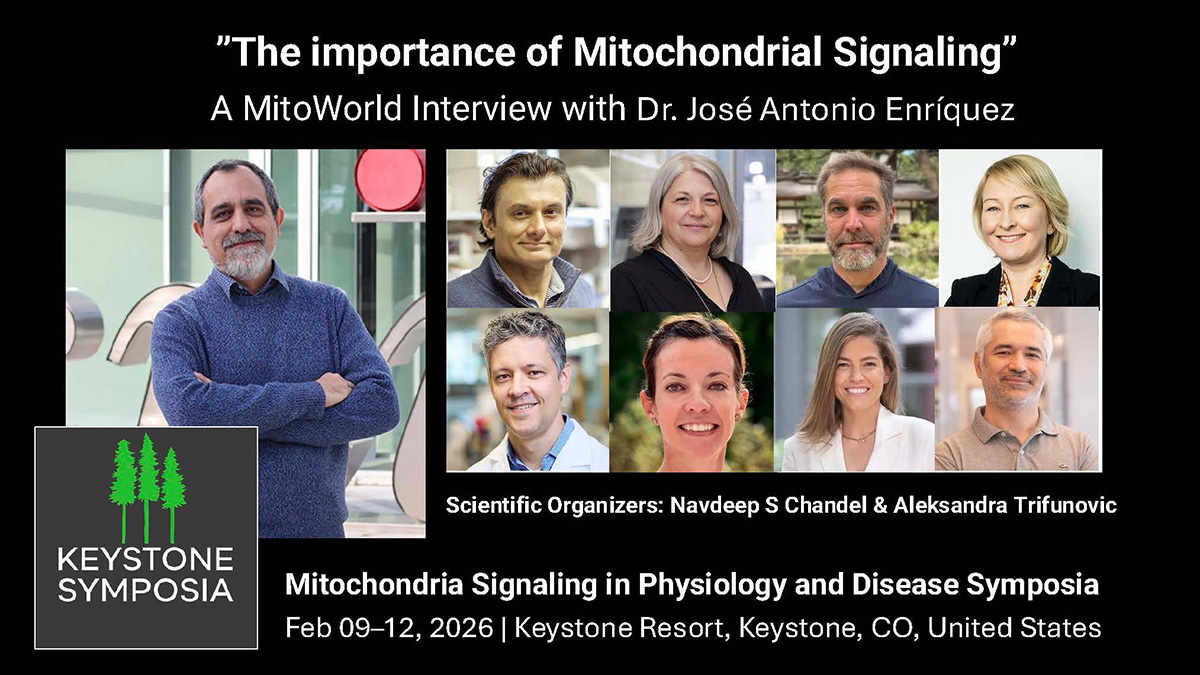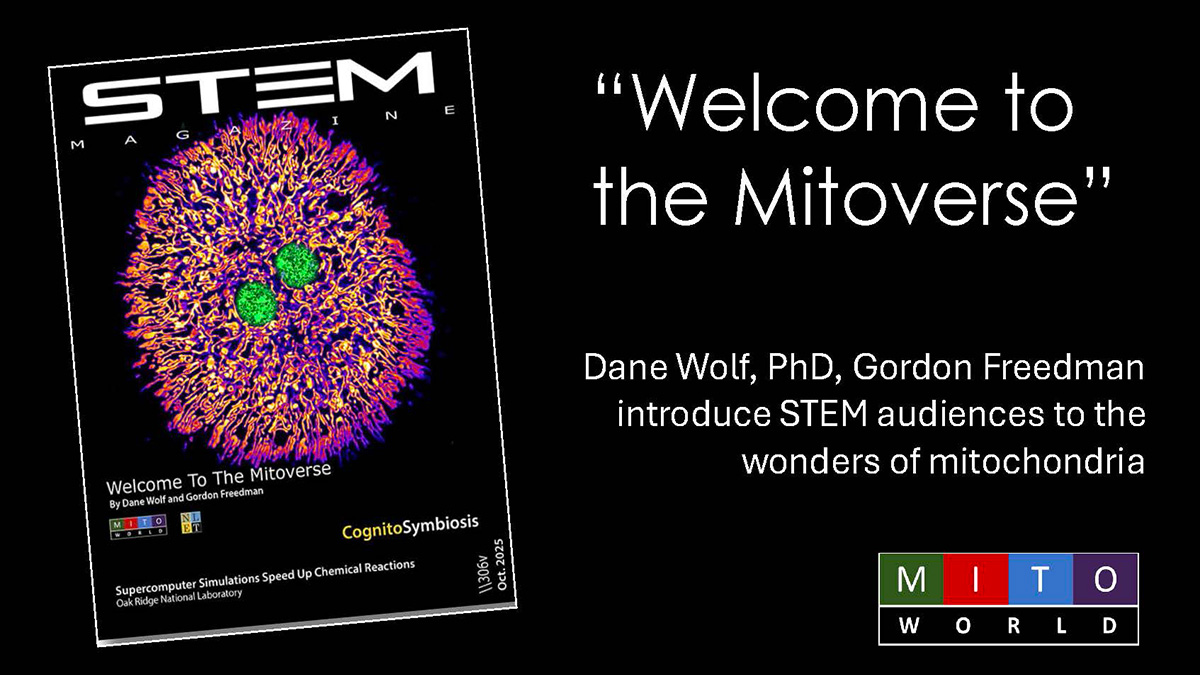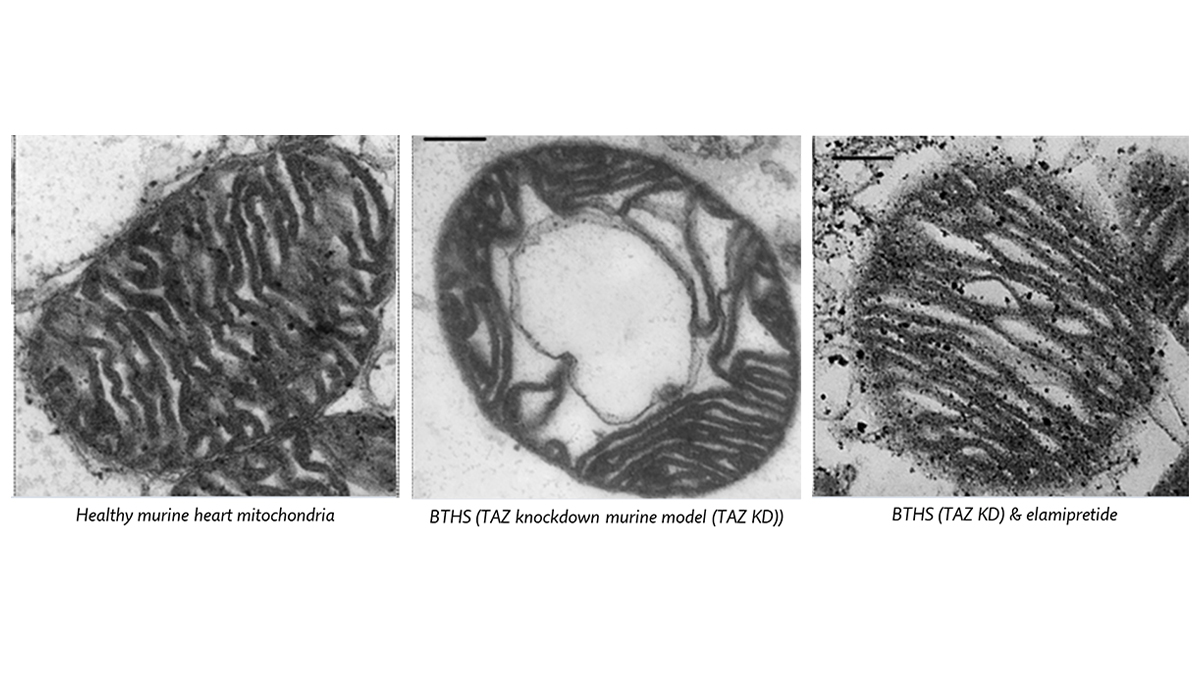
Mitochondria, Curiosity, and Crazy Ideas: Inside Dr. Toño Enríquez’s GenOXPHOS Lab
Dr. José Antonio Enríquez—known to his lab simply as Toño—leads the Functional Genetics of the Oxidative Phosphorylation System (GenOXPHOS) group at the Spanish National Centre for Cardiovascular Research (CNIC). Using large-scale bioinformatics, his lab investigates many aspects of mitochondria, including how their protein complexes assemble, the pathophysiology of mitochondrial diseases, and even the evolutionary history of mitochondrial proteins.
Toño’s path to mitochondrial science began at the University of Zaragoza, where he completed his PhD. He then moved to California for a postdoc at Caltech before returning to Zaragoza to establish his first lab as a Principal Investigator. About 15 years ago, he moved his lab to CNIC, where he continues to push the boundaries of mitochondrial biology.
When asked what drew him to this field, Toño recalled:
“When I finished my biology degree, I knew I wanted to dedicate my life to science, but my interests were broad. I wasn’t drawn to one specific topic or focused on curing a particular disease. I was more interested in understanding the logical rules behind life itself. During a lab rotation at the University of Zaragoza, I encountered mitochondrial DNA (mtDNA). I was fascinated by the fact that this tiny but essential chromosome lives outside the cell nucleus. The idea of an ‘outsider’ chromosome inside a eukaryotic cell sparked my curiosity, and that’s what brought me to mitochondrial research.”
Known for his passionate and fiercely curious nature, Toño fosters a lab culture that encourages creativity, independence, and open scientific debate. He pushes his lab members to think outside the box—not just in their experiments, but in how they approach problems, question assumptions, and imagine what might be possible. He thrives on “crazy” ideas and welcomes disagreement as a sign of engaged thinking. Weekly lab meetings often begin with him sharing a new paper, a philosophical question, or a hypothesis that came to him out of the blue.
What are the big questions ahead for mitochondrial research?
“Mitochondria continue to surprise us,” says Toño. “From their own unique DNA and divergent genetic code to their roles in apoptosis, signaling, and disease, there’s always something unexpected. The OxPhos system alone is remarkably complex in both structure and function.”
As for what’s coming next?
“I think the most important discoveries may still be ones we don’t expect. But if I had to name specific questions for the coming year, I’d point to three:
- Understanding how sodium (Na⁺) helps build the mitochondrial membrane potential,
- Figuring out how cells maintain different types of specialized mitochondria within a single cytoplasm, and
- Resolving the debate over whether mitochondria can move between cells in a physiologically meaningful way.”
A major breakthrough: SCAF1 and mitochondrial supercomplexes
One of the lab’s most exciting discoveries was identifying the protein SCAF1 (supercomplex assembly factor 1), which enables the physical interaction between two key components of the electron transport chain—complex III and complex IV.
“This was a big step in supporting our ‘plasticity model’ of how the mitochondrial electron transport chain is organized,” says Dr. Enríquez. “We were also excited to show that variations in mtDNA can influence metabolism and healthy aging. And our recent finding that respiration complex I acts as a sodium/hydrogen (Na⁺/H⁺) antiporter revealed that sodium plays a major role in building the mitochondrial membrane potential.”
Meet the GenOXPHOS Team:
The GenOXPHOS lab currently includes around 10 members, each pursuing their own research, but generally, the group can be divided into the following research directions.
Mitochondrial Supercomplexes and Their Role in Health
This team includes three graduate students, each using different strategies to understand how respiratory supercomplexes are assembled and what role they play in health and disease.
Carmen Morales Vidal studies a highly conserved supercomplex made up of respiratory complexes I and III, exploring the importance of this interaction in mammalian cells.
Paula Fernández-Montes Díaz focuses on a family of complex IV protein isoforms, each of which is responsible for a different conformation of complex IV. These variants allow tissues to fine-tune their metabolism based on specific energy needs.
Sara Natalia Jaroszewicz specializes in advanced super-resolution microscopy to visualize these supercomplexes inside intact cells. Until recently, this was only possible using indirect and often disruptive methods.
Heart-Specific Mitochondria
Located in a cardiovascular research center, the lab has a strong focus on heart-specific mitochondrial biology.
Dr. Michaela Veliova, a postdoctoral researcher, studies different subtypes of mitochondria within individual heart cells. She’s investigating how these subtypes form and function and what roles they play in disease.
Dr. Rebeca Acín, a senior scientist, examines the reversal of ATP synthesis, a process where ATP synthase (normally making ATP) starts breaking it down. While this may help with mitochondrial quality control, Rebeca is exploring its connection to disease. She’s also investigating how ATP synthase dimerization (its ability to form pairs) affects this reversal process.
Translational Research: From Discovery to Therapy
This part of the lab focuses on translating basic mitochondrial science into potential therapies.
Dr. Marta Pérez-Hernández Durán, a postdoctoral researcher, is studying a protein kinase called FGR that regulates the activity of mitochondrial complex II. Stress-dependent activation of FGR increases reactive oxygen species (ROS) production and stabilizes HIF1a, ultimately leading to increased release of inflammatory cytokines. Since inflammation is present in numerous heart diseases, Marta is testing whether blocking FGR could be a promising treatment.
Dr. Rebeca Acín is exploring another potential drug target. OMA1, a stress-activated mitochondrial protease can trigger fragmentation of mitochondria. She is examining whether modulating its activity could help prevent mitochondrial damage in disease.
Bioinformatics and Structural Modeling
This line of research seeks to uncover how mitochondrial structures and genetic interactions shape function and dysfunction.
Dr. Jose Luis Cabrera Alarcón, a postdoctoral researcher, studies evolutionary conservation of mitochondrial genes at the population level, with the aim of identifying how genetic incompatibilities between nuclear and mitochondrial genomes might contribute to disease.
Marina Rosa Moreno, a graduate student co-mentored by Dr. Enriquez and José Luis, studies the structural biology of respiratory chain complexes. Using computational modelling and cryo-electron microscopy, she investigates how the respiratory chain complexes assemble and how structural variations may affect energy production and pathology.
The Lab’s Backbone
A great research environment doesn’t just depend on bold ideas. It also relies on the people who keep things running. GenOXPHOS is supported by a dedicated technical team:
Dr. María Concepción Jiménez Gómez, the lab manager, keeps operations smooth and organized.
Eva Raquel Martínez brings deep expertise in histology and molecular biology techniques.
Dr. Raquel Martínez de Mena oversees tissue culture and cell maintenance.
María del Mar Muñoz Hernández, the lab’s mouse technician, specializes in advanced animal procedures critical for the in vivo and translational work.






